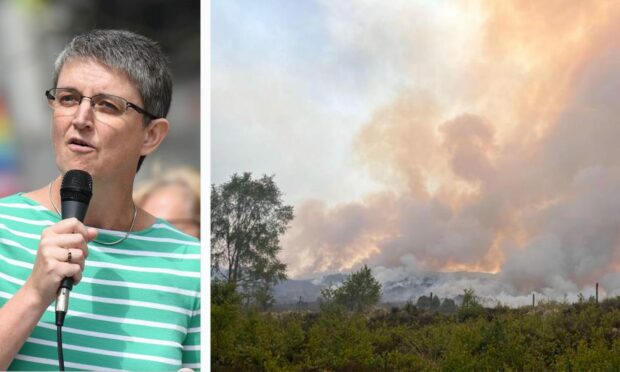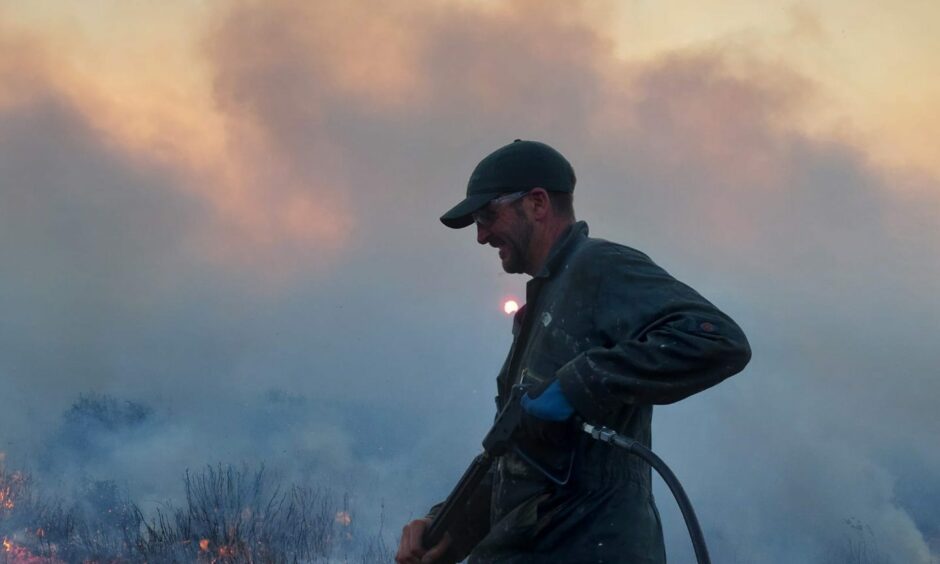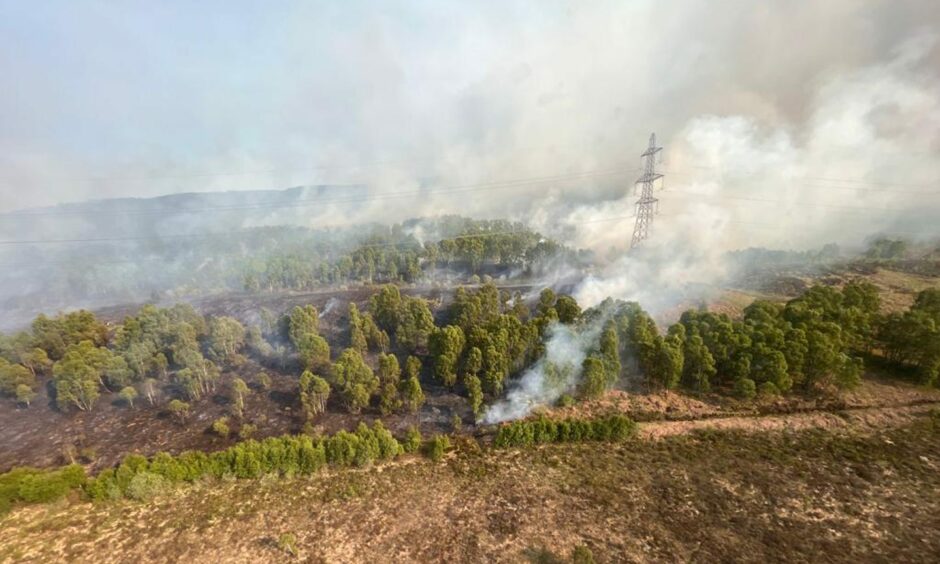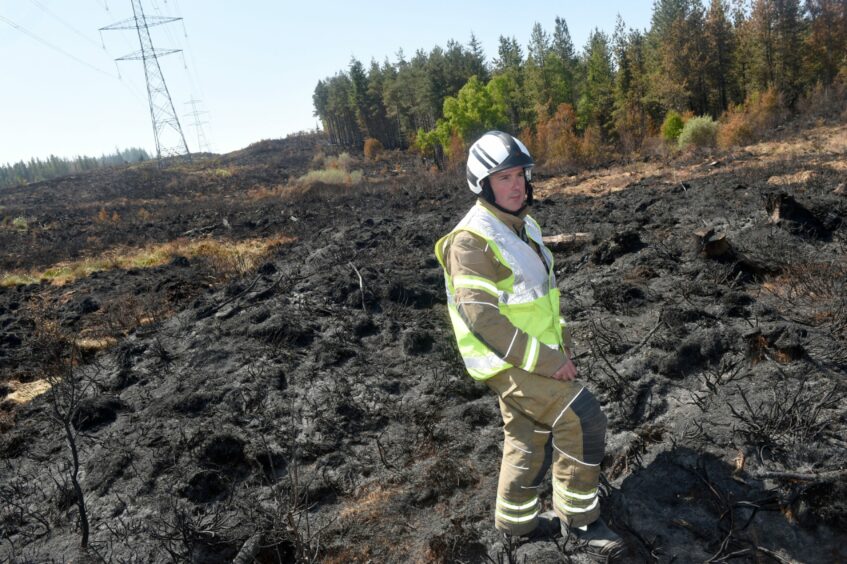Green MSP Maggie Chapman has warned that massive wildfires in the Highlands have become “the new normal.”
Her intervention comes after firefighters remain fighting the flames at Cannich, west of Loch Ness, for the eighth day in a row.
The fire began on Sunday May 28, and has so far destroyed six square miles of land.
More than 30 firefighters have been involved in fighting the inferno, including crews from Balintore, Bealy, Fort Augustus and Newtonmore.
A helicopter was also called in to assist with water bombing and control its spread.
Two firefighters were hurt and flown to hospitals in Aberdeen and Inverness when their vehicle crashed and overturned near the scene of the fire.
One careless camper can ‘ignite a tragedy’
Ms Chapman said: “Our thoughts are with the two injured firefighters, their families and colleagues and we wish them a speedy recovery.
“It heartbreakingly illustrates the very real and physically demanding risks they face in tackling such incredibly complex situations.
“Wildfires are the new normal for too many of our rural communities. One piece of broken glass, one careless camper, soaring heat or just bad luck can ignite a tragedy on a massive scale.
“It is incumbent on the Scottish and UK Governments to ensure that all firefighters have the equipment and facilities required to keep as safe as possible, and to ensure we raise the awareness with the public about the increased risks and consequences.”
Watch a video of the fire from the Royal Society for the Protection of Birds below:
The Scottish Fire and Rescue is investigating what caused the blaze, while Forestry and Land Scotland believe it may be linked to wild camping in the area.
Over the past six years, the Scottish Fire and Rescue Service has tackled close to 1,000 wildfires 1,000m2 or more in size.
Climate change poses an ‘ever increasing challenge’
The Fire Brigades Union (FBU) regional secretary John McKenzie has called on more government support.
He said: “Climate change, and the extreme weather it is producing, pose an ever increasing challenge for our profession, and although such incident types are becoming increasingly common, governments have been aware of the threat for decades.
“Heatwaves have been on the UK government’s National Risk Register since its first iteration in 2008, and wildfires as a national risk were added to the register in 2013.
“Our members are seeing first-hand the risk of climate-related emergencies growing year on year.
“As temperatures rise and summer rainfall decreases, conditions highly conductive to wildfires could be nearly five times more common in some parts of the UK by the latter part of the century.
“July 2022 saw the temperature in parts of the UK exceed 40 degrees centigrade for the first time in recorded history.”
Is Scotland prepared for another wildfire like Cannich?
Due to the rising threat of wildfires, the ability of the SFRS to respond has come under great scrutiny.
In Scotland 1,100 firefighters have left the service since 2013.
The Fire Brigades Union (FBU) has warned these cuts will reduce fire cover and has urged the government to invest in the fire service to continue the fight against wildfires.
Mr McKenzie said: “Wildfires such as the ongoing incident near Cannich require significant numbers of firefighters and Fire and Rescue Service resources in order to extinguish them.
“They often cover extensive areas of rough terrain which are inaccessible other than on foot and therefore require firefighters to carry out physically demanding work for long periods of time, transporting heavy equipment by hand, whilst also being exposed to significant temperatures.
“Additionally, the nature of wildfires is such that they can last for long periods of time, often burning for many days, and at times, weeks on end.”




Conversation